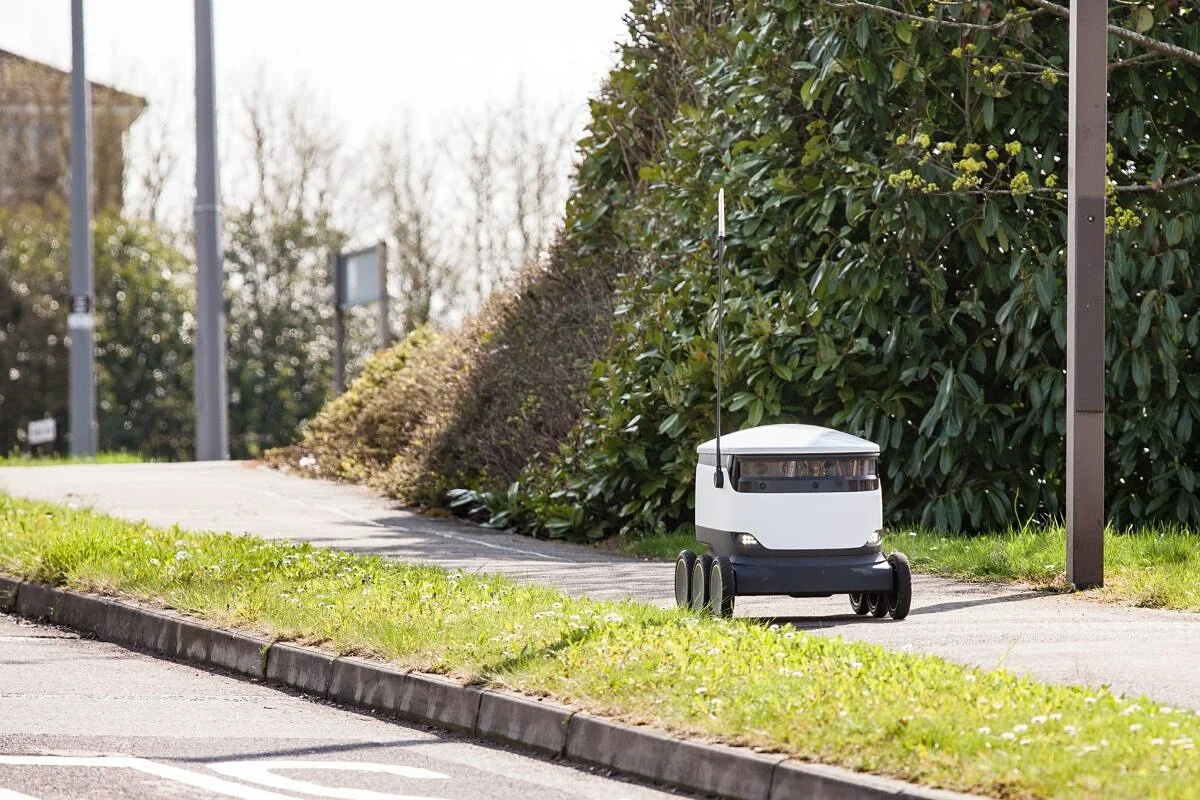How autonomous delivery robots will transform retail
Self-driving cars are dreams of the future, but technology could revolutionize local and online retail.


When thinking about an autonomous vehicle, anyone who imagines something like K.I.T.T. from the TV series “Knight Rider” is not thinking creatively enough – and will have to wait a long time. This technology will transform many other areas, however. One such area has grown particularly dynamic in recent months: the automated delivery of parcels or even food. And this could radically alter how, when and where we shop.
The idea behind it
The idea is also gaining momentum because it is becoming increasingly apparent that cars that are 100-percent driverless are going to be more difficult to implement than originally thought. After all, they have to be able to cope with all roads and traffic situations at least as well as a human driver can. At the same time, they have to protect passengers and other users of the roads as well. And they should very naturally go with the flow in normal road traffic – whether in residential areas or on the highway. All of these points present plenty of challenges.
The situation for delivery robots is different. They move about in a clearly defined area, and since they only carry goods and not people, they can be designed in a smaller, simpler format. They can prioritize the safety of the people around them at the same time.
From moving cooler bag to a rolling kiosk
This is why many delivery robot startups are going from the road straight to the sidewalk. Their models are closer to a moving cooler bag. Amazon’s “Scout” is one example of this, and there are numerous others: In a test, the startup Starship delivered snacks to hungry students at George Mason University in Virginia. Pepsi is involved in a similar trial at the University of the Pacific in California.
At the other end of the scale, one finds rolling kiosks such as Robomart. These not only deliver but bring a small supermarket to the front door.
The startup Nuro, on the other hand, takes the middle ground: Although their autonomous delivery vehicles operate in road traffic, they are much smaller than a normal car and do not currently driver faster than 40 km/h (25 mph).
What makes this so interesting for retailers?
But why is this interesting to retailers? Bear in mind: Although Amazon seems to be a giant, the company still accounts for just a comparatively small market share of all purchases. As a rule, customers still get in their own car, select the merchandise in person and transport them home. Only in exceptional cases, such as delivery services for pizza, etc., can you place your order from home and receive the goods at the door a short time later.
This could radically change if delivery robots prove to be a fast, dependable and inexpensive alternative. Local merchants could then deliver on demand, the way Amazon does today, and even within minutes. And Internet retailers could provide more and faster delivery options while making returns much more convenient as well.
Other benefits for customers: because autonomous vehicles do not have working hours, customers have greater latitude in specifying the delivery time. And as with Uber and the others today, a user can consult the app to see where the vehicle is and when it will arrive.
Certainly, the small delivery robots will not compete directly with DHL and its fellow delivery services. More interesting to them are ideas such as Renault’s “EZ Pro,” where a human parcel delivery person and a fleet of autonomous vehicles work together. Delivery bots will not be suitable for every industry and product group. A time will come, though, when customers expect the convenience, flexibility and speed of automated delivery.
The bottom line
How dependable and helpful these delivery robots really are will of course have to be proven in practice. Unlike a driver for a parcel service, they can’t simply run up to the fifth floor or even open a gate. And some fear that they may cause chaos on our sidewalks and streets. The startups themselves argue that their vehicles would reduce individual traffic and compensate for this.
We’ll soon learn more about all of these questions: Nuro is already running a large-scale test in Phoenix, Arizona. The experiment will be extended to cover the entire urban area this year. There’s plenty of money on hand for the purpose: The SoftBank Vision Fund recently invested nearly USD 1 billion in the company.
And many others are already testing their robots on sidewalks and roads. The Swiss postal service Schweizerische Post, for instance, was quite pleased with the results of its experiments.





